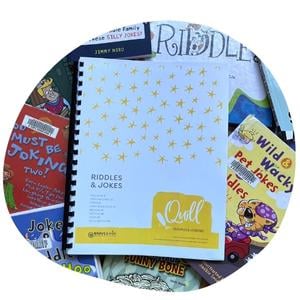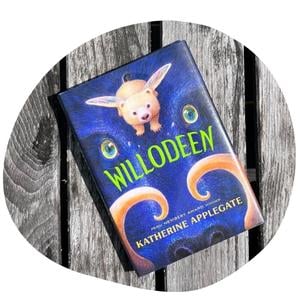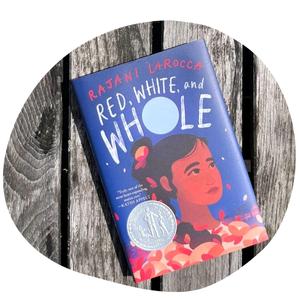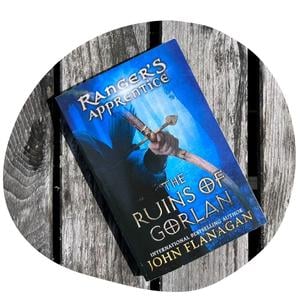Mechanics & Literature: September 2022
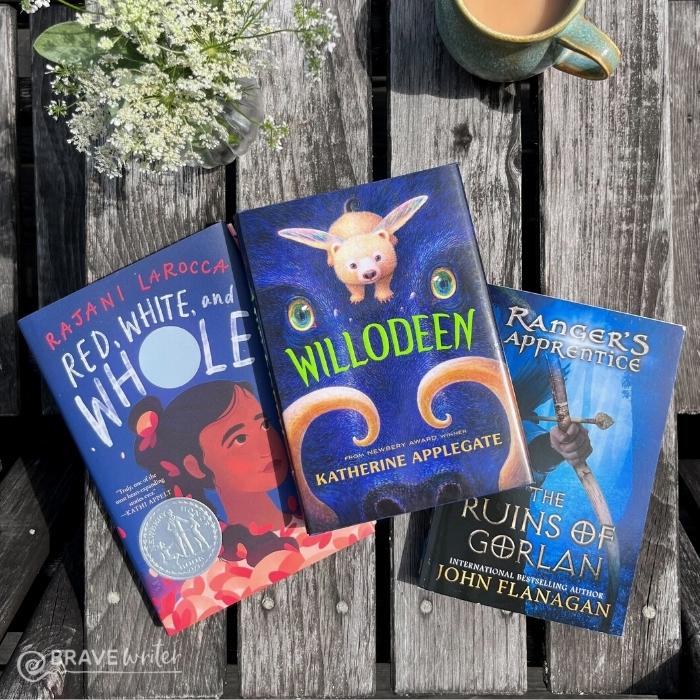
September is a fresh start—a chance to make new family memories.
Are you ready to laugh? This month’s Quill is all about Riddles and Jokes!
September’s Dart, Arrow, and Boomerang are stories that celebrate the beauty of connection with:
- nature,
- family,
- and friends.
Immerse yourself in these dynamic stories of courage and perseverance while your family explores writing, mechanics, and literary devices in brand new ways!
[This post contains Amazon affiliate links. When you click on those links to make purchases, Brave Writer receives compensation at no extra cost to you. Thank you!]
In this Quill we’ll get wordy with wordplay—exploring how puns, slang, homonyms, and homophones make jokes work; examine book brains, also known as the table of contents; hunt for letters in the wild as we explore fonts; hone comedic timing by telling jokes; collect favorite funnies in a joke book; and play with patterns in jokes and beyond!
NOTE: You can use any joke-themed picture books you have in your stacks or find at your library.
Some suggestions:
- Eight Ate: A Feast of Homonym Riddles by Marvin Terban
- Fun Jokes for Funny Kids! by Reader’s Digest
- Hungry for Math: Poems to Munch On by Winters, Sherritt-Fleming, and Collins (poem: “Pattern Rock!”)
- Riddles by Pam Rosenberg
- Riddles and Trick Questions for Kids and Family! by Puzzleland
- So Imagine Me: Nature Riddles in Poetry by Lynn Davies
Get the Quill.
Willodeen by Katherine Applegate
A timely and timeless tale about our fragile earth, and one girl’s fierce determination to make a difference.
The Literary Device is Descriptive Language, a tool that makes moments in a story feel real.
We’ll also:
- collapse words into contractions,
- examine end marks,
- find out why dilly bugs and peacock snails are compound nouns,
- take note of a commanding colon,
- spy several scent-ilating similes,
- use a robust set of tools to describe some magical creatures, and so much more!
Get the Dart.
Red, White, and Whole by Rajani LaRocca
Reha feels torn between two worlds: school, where she’s the only Indian American student, and home, with her family’s traditions and holidays. When Reha finds out that her mom is sick, she is determined to make her Amma well again. She’ll be the perfect daughter if it means saving her mom’s life.
The Literary Device is Allusion. LaRocca leans heavily on this device, repeatedly referring to popular music from the 1980s to help us hear this story unfold.
We’ll also:
- notice and name the elements of a novel in verse,
- see why metaphors are often the apple of an author’s eye,
- practice personification,
- read one-word sentences and ponder their power,
- examine epistolary writing down to the letter,
- learn the story behind the story with help from the author’s note, and so much more!
Get the Arrow.
The Ruins of Gorlan (The Ranger’s Apprentice, Book One) by John Flanagan
The Rangers have always scared him in the past—with their dark cloaks and shadowy ways. Now, our 15-year-old protagonist, always small for his age, has been chosen as their apprentice. He will soon find out that they are the protectors of the kingdom.
In this Boomerang we’ll:
- ponder shifting perspectives and point of view,
- brood over the backstory and forecast the future with foreshadowing,
- glance at graphic design choices,
- linger with ellipses,
- analyze archetypes and flutter through the fantasy fiction genre,
- dissect storytelling in dialogue, and so much more!
Get the Boomerang.
For ages 15-18, check out the Slingshot.

